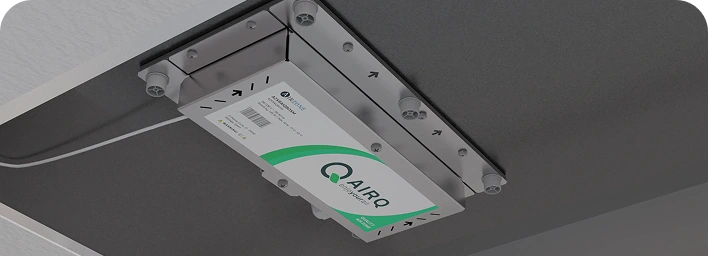Enhances Your Indoor Air Quality
AirQ
 Headache?
Headache? Itchy throat?
Itchy throat? Having trouble concentrating?
Having trouble concentrating?Indoor Air Quality Variables
There are four variables that influence the quality of the air we breathe in an enclosed space and, therefore, our well-wellbeing:

CO2
Elevated CO2 levels in enclosed spaces can have negative effects on health, causing symptoms such as dizziness, headaches, reduced cognitive function, and difficulty concentrating. Ideally, CO2 concentrations should stay below 800 ppm. However, in a 30 m2 room with 10 people, this threshold can be reached within just 15 minutes1. Outdoors, CO2 levels typically range from 300 to 400 ppm, but in urban areas, they can climb as high as 550 ppm.
CO2
CO2
PM10
PM10
PM2,5
PM2,5
VOC
VOC
Technology for high-quality indoor air
The AirQ range from Airzone is engineered to monitor and improve indoor air quality in any environment. Our devices not only measure the concentration of key air quality variables but also automatically adjust the surroundings to prevent harmful levels that could affect occupant health. Through the smart integration of air purifiers, ventilation systems, air conditioning, and heating, AirQ creates healthy spaces that prioritize energy efficiency, comfort, and well-being.

AirQ efficacy
Reduction in the number of particles in suspension
Reduction in fungal flora
Inhibition of the staphylococcus aureus2 bacteria
Reduction in mesophilic anaerobic flora
Inhibition of the sars-cov-2 virus
AirQ devices

AirQ Box
An air purification device using ionization technology, which effectively eliminates harmful particles from the environment.

AirQ Sensor
Air quality sensor that monitors the key variables influencing indoor air quality and activates a response to reduce the concentration of CO2 in the environment.


